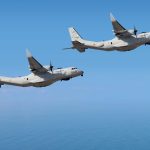One of the longest-lived aircraft is saying goodbye. Pilatus Aircraft finally produced the last PC-6 «Turbo Porter» after announcing the model’s end of production in 2017, completing a 63-year chapter that began in 1959.
The PC-6 is a light aircraft recognized for its short takeoff and landing (STOL) capabilities. It has been equipped with piston and turboprop engines and was also produced in the United States and China under license.
Brief history of the PC-6
The first model of the PC-6, equipped with 254 kW piston engines, had its maiden flight on May 4, 1959. Two years later, the first Turbo Porter, powered by a Turbomeca Astazou II turboprop engine, flew for the first time.
Complaints about the Astazou II’s reliability and high fuel consumption soon followed, leading to the addition of the Garret Air Research TPE 331 engine in 1967, and later the Pratt & Whitney Canada PT6A in 1996, rated at 507 kW (680 shp).

With a range of 925 kilometers and a cruise speed of 213 km/h, its ability to take off within 640 feet (195 m) and land in 427 feet (130 m), carrying a payload of 1,200 kg, made it popular for operating in remote and unique areas where previously only helicopters could access. In fact, Pilatus offered rotary-wing companies the PC-6 as an option for their fleets.
It can also operate on uneven, unprepared runways, in cold and hot climates and at high altitudes (which is why it is widely used in the Himalayas). The landing gear employed provides large clearances between the wings and propellers, making the PC-6 less susceptible to damage than conventional nosewheel-type landing gears.
For added versatility, several types of landing gear can be optionally installed to allow it to operate in diverse terrain conditions, such as floats for water and skis for snow.
It has large sliding doors to facilitate the loading of 1,200 kg or transporting ten passengers.
The aircraft broke the high-altitude landing and takeoff record when it operated at an altitude of more than 5,750 meters on the Dhaulagiri glacier in Nepal.

The airframe is of robust, low-maintenance construction, with important levels of accessibility, interchangeability, and favorable manning levels. The wings, fuselage and empennage are manufactured using conventional semi-monocoque construction techniques, with the main structure composed of aluminum, retaining critical strength to withstand landings on poor runways.
It also adds features such as low-pressure tires, dual-caliper disc brakes and a highly energy-absorbing landing gear that allow the aircraft to be capable of operating in difficult or challenging terrain.
The Pilatus PC-6 has become a very flexible aircraft for a variety of missions, such as transport, parachute drop, aerial photography, surveillance, air medical services and search and rescue duties.
United States
The Porter was also manufactured under license by Fairchild Hiller in the United States. Approximately 100 of these aircraft would be completed, being purchased primarily by civilian operators within the US.
Several Fairchild Hiller-built PC-6s were also acquired for military operations during the Vietnam War, with the designation AU-23A Peacemaker for service with the U.S. Air Force.

The Peacemaker was equipped with a 20 mm side-firing XM-197 Gatling gun, four wing pylons, could carry a variety of munitions, including forward-firing gun pods, 500- and 250-pound (230 and 110 kg) bombs, napalm units, cluster bomb units, flares, rockets, smoke grenades and airborne leaflet propaganda dispensers.
Fifteen Peacemakers were produced for the U.S. Air Force, which were sold to the Royal Thai Air Force, which also incorporated 19 other aircraft.
The end after 63 years
After 603 Pilatus PC-6 built, including those made by Fairchild Hiller, Pilatus Aircraft closed the production line of this glorious model that helped strengthen the position of the Swiss manufacturer. The last aircraft was due for delivery in 2020, but the pandemic delayed plans.
The last copy, serial number 1019, will be received by a company from Indonesia: Indonesian Smart Aviation which will carry the registration PK-SNK. In 2020, Pilatus Aircraft received the last agreement with that company for five PC-6 aircraft.

There are currently 295 «Turbo Porters» operating around the world, some of which have been in service for more than 40 years, demonstrating the robustness of the model.
In Latin America, we can find them active in Argentina, Ecuador, Mexico and Peru.
Pilatus Aircraft will focus on its PC-7, PC-12, PC-21 turboprops and its PC-24 business jet, all of which have inherited many of the characteristics of the PC-6 to operate in complex terrain.














